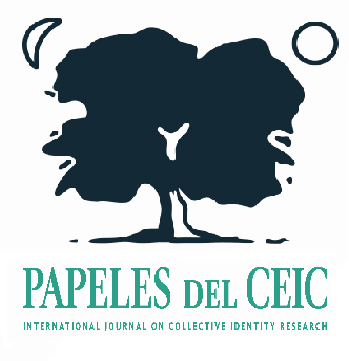India, Octavio Paz and the Challenges of Multiculturality. An Essay On India's Cultural Diversity
##plugins.themes.bootstrap3.article.main##
##plugins.themes.bootstrap3.article.sidebar##
Published
24-09-2013
Felipe Arocena Armas
Abstract
Only China and India overpass the barrier of one thou- sand million inhabitants and they will be key players of the XXI century. Transformations of the Indian econo- my and its social modernization have deepened in the last decades, but visible features of its culture and poverty are difficult to understand from the western point of view. The exuberant multiculturality of India expresses in the coexistence, sometimes explosive, of several religions (Hindus 81%, Muslims 13%, Christians 2%, Sikhs 2%, Buddhists 1%, others 1%); a multiplicity of languages (there are 22 officially recognized languages that reflect the strength of cultural minorities at the regional level); and deep socioeconomic inequalities (42% of the population lives with less than 1,25 dollars per day and the traditional cast system is still alive). In particular this work analyzes the extraordinary chal- lenge of the cultural diversity in Indian society, inter- prets the way Octavio Paz understood this problem, and explores what can be said from the theory of culture.
How to Cite
Arocena Armas, F. (2013). India, Octavio Paz and the Challenges of Multiculturality. An Essay On India’s Cultural Diversity. Papeles De Identidad, 2013(2). https://doi.org/10.1387/pceic.12415
##plugins.themes.bootstrap3.article.details##
Keywords
Sociological theory, Multiculturalism, Identity
Section
Research Articles
Papeles del CEIC is distributed under the licence Creative Commons Reconocimiento-NoComercial-SinObraDerivada 3.0 España (CC BY-NC-ND 3.0 ES)
Usted es libre de:
- copiar, distribuir y comunicar públicamente la obra
Bajo las condiciones siguientes:
- Reconocimiento — Debe reconocer los créditos de la obra de la manera especificada por el autor o el licenciador (pero no de una manera que sugiera que tiene su apoyo o apoyan el uso que hace de su obra).
- No comercial — No puede utilizar esta obra para fines comerciales.
- Sin obras derivadas — No se puede alterar, transformar o generar una obra derivada a partir de esta obra.
Entendiendo que:
- Renuncia — Alguna de estas condiciones puede no aplicarse si se obtiene el permiso del titular de los derechos de autor
- Dominio Público — Cuando la obra o alguno de sus elementos se halle en el dominio público según la ley vigente aplicable, esta situación no quedará afectada por la licencia.
- Otros derechos — Los derechos siguientes no quedan afectados por la licencia de ninguna manera:
- Los derechos derivados de usos legítimos u otras limitaciones reconocidas por ley no se ven afectados por lo anterior.
- Los derechos morales del autor;
- Derechos que pueden ostentar otras personas sobre la propia obra o su uso, como por ejemplo derechos de imagen o de privacidad.
- Aviso — Al reutilizar o distribuir la obra, tiene que dejar bien claro los términos de la licencia de esta obra.
The author can use his/her article freely always indicating that it has been published in Papeles del CEIC. International Journal on Collective Identity Research. Any re-edition of the article must be approved by the journal editorial team.

